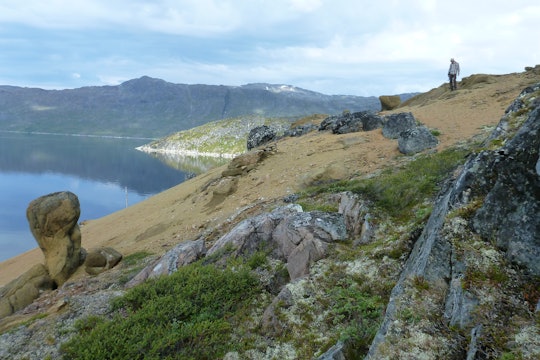
Julie Hollis
The supposedly oldest impact crater on Earth isn't a crater after all
A history-rewriting discovery in Greenland in 2012 has been debunked
The story of science is filled with errors. But often, we only hear about science in a smooth, streamlined way that removes the countless mistakes and accidents that inevitably happen. We wanted to hear about the unvarnished, goofed-up version of science we don't hear about. This is Mistakes Month.
It was a great story. The authors of a 2012 study proposed that 3 billion years ago – before multi-cellular life appeared on Earth – a giant meteorite plummeted through the atmosphere. It punched through the Earth’s surface into the deep crust in what is now west Greenland.
Massive heat generated on impact instantaneously melted rocks in a 50 km radius. Earthquakes shook the surviving rocks so violently that they were pulverized beyond recognition. The Earth’s mantle melted and magmas surged up into the impact zone. Meanwhile, from above, seawater poured into the crater and changed the chemical composition of the screamingly hot rocks.
Prior to publication of this story, the lead author had been studying the rocks in this part of west Greenland for many years and found that he still didn’t entirely understand some of their features. But while poring over maps in his office in Copenhagen, preparing for an academic meeting, he hit on the idea of a meteorite impact to explain a range of features in the rocks.
The resulting article was met with widespread media attention, with headlines like "Earth's oldest impact crater found in Greenland." It presented fifteen lines of evidence. None of them were evidence normally used to recognize impact craters by the scientific community, such as shatter cones or planar deformation features in minerals, which are shock damage to rocks and minerals that can only be the result of a high-velocity meteorite impact. But, the authors argued that after 3 billion years of erosion, the deep level of crust now at the surface would preserve different features than more recent impacts.
Those authors attributed an impact origin to features including:
· an elliptical magnetic anomaly, the strongly magnetic central zone being attributed to a concentration of magnetic rocks caused by the impact.
· a central zone of pulverized rocks that were interpreted as being formed by impact shock and related earthquake damage caused by the impact.
· widespread alteration of the crater rocks by hot seawater, recognized in what were thought to be unusual features in the crystal structures of zircon – a common mineral that can be used to date rocks.
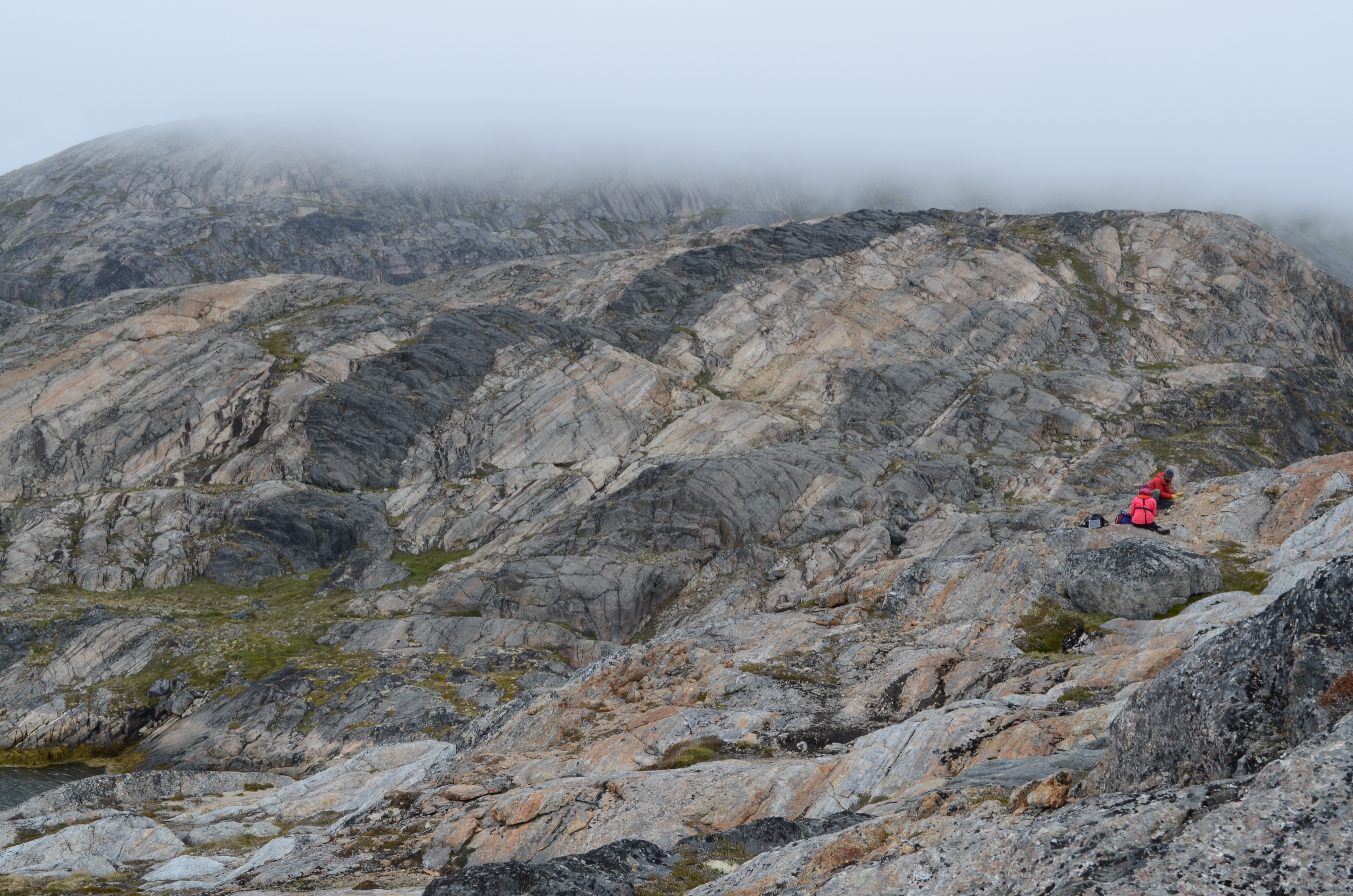
Geologists working in the Maniitsoq area, collecting samples.
Julie Hollis
If this was true, it would be by far the oldest recognized impact crater on Earth – more than 800 million years older than the next oldest, the Yarrabubba crater in Western Australia – and it would give us a window into studying the ancient impacts that shaped the early history of Earth.
So, as an international group of geologists from Greenland, Denmark, Canada, and Australia, embarking on making a modern geological map of this same region, we were eager to see these remarkable rocks. But when we did, we were surprised to find that they looked like many other ancient rocks we had worked on in other parts of the world with no particularly unusual features that would obviously suggest an impact.
Chris Yakymchuk, assistant professor at the University of Waterloo and lead author of our new study evaluating the meteorite impact model, explains his first reaction:
"I try to keep an open mind about everything in science, especially until you see the rocks themselves. [But] after seeing the rocks, it was kind of 'Huh? These don't look that different from rocks I’ve seen elsewhere in the world.' So either we missed impact structures everywhere on Earth or this wasn't one."
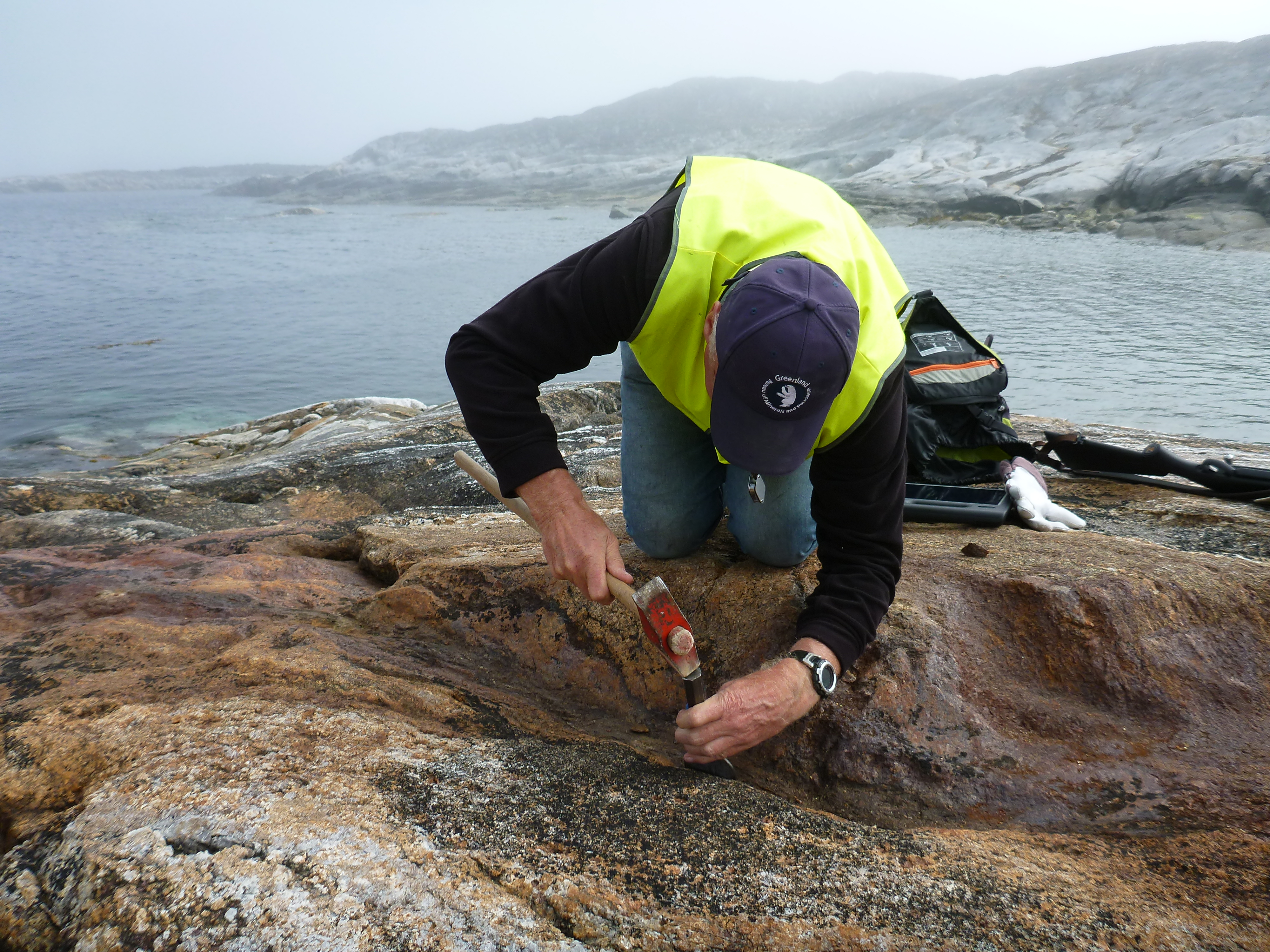
A Government of Greenland geologist collects a sample for analysis.
Julie Hollis
As we painstakingly looked for evidence of an impact, we found that it slipped away. There was no elliptical magnetic anomaly. When viewed on the broad scale of west Greenland, there appears to be a magnetic anomaly, but when viewed at a 100km scale – the scale of the proposed crater – it disappears. In fact, the various magnetic patterns in the rocks can be explained by normal, Earth-bound geological processes.
The pulverized rocks were simply magmatic rocks and most of them, upon closer examination, were younger than the proposed impact.
What’s more, the magmatic rocks in the central part of the proposed impact crater were remarkably similar – in chemical composition, age, field relationships, geophysical character – to another large area of magmatic rocks outside the impact zone. Why would almost identical magmatic rocks in the same region be formed in different ways?
We also discovered a zone of rocks cutting right through the proposed crater that were formed at least 100 million years after the proposed impact. Then the rocks were buried, heated, and deformed in the Earth's deep crust. How could they possibly coexist with an older preserved impact crater? Evidence of an impact crater would not survive such processes.
So, did the impact actually happen at all? We investigated key aspects of the story that would give a definitive answer.
First, we dated the melts thought to be formed by instantaneous impact-induced melting. They were almost 40 million years younger than previously thought and couldn't be related to proposed impact.
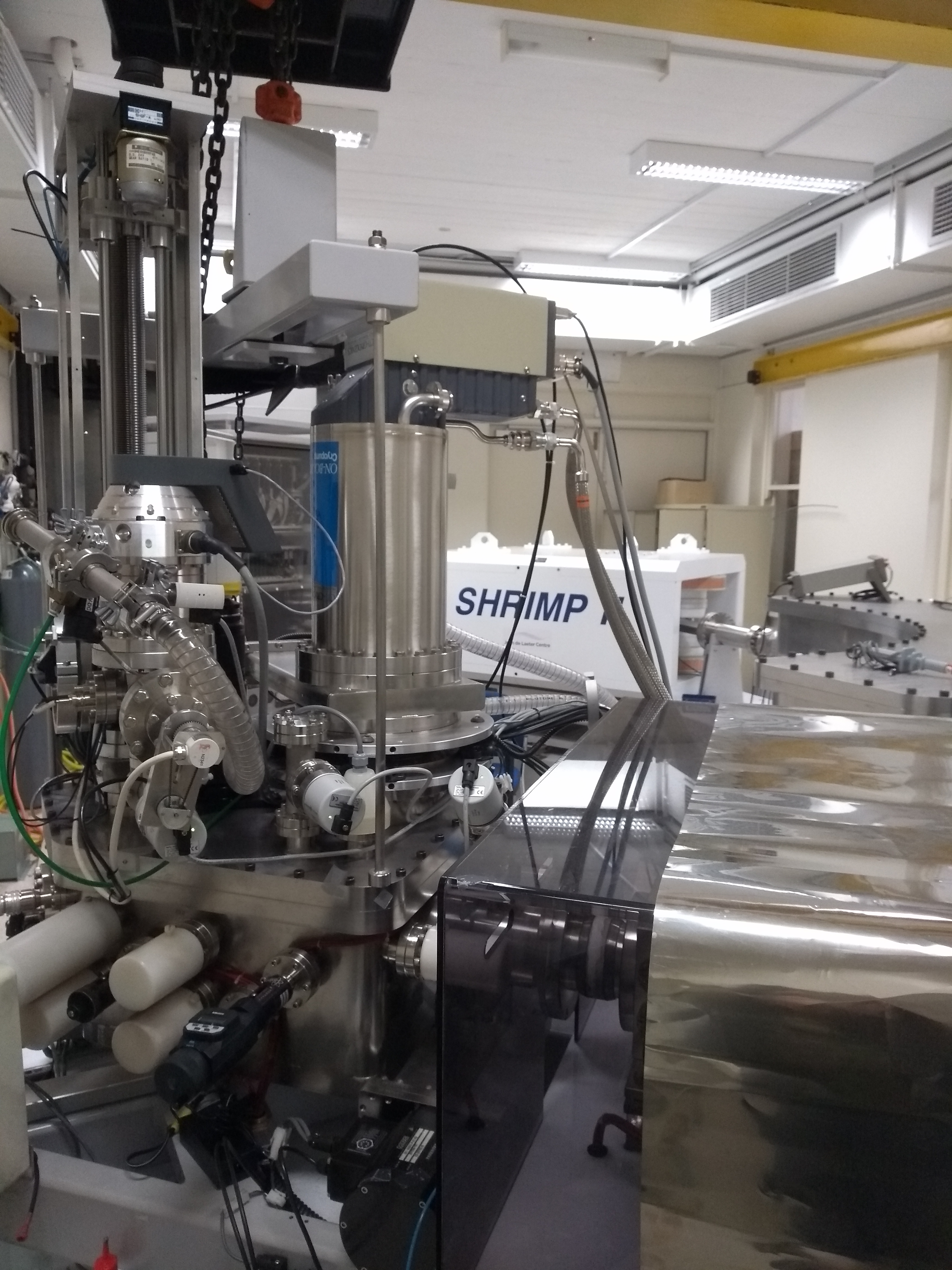
The Sensitive High Resolution Ion MicroProbe (SHRIMP), used to determine the ages of the many zircons analyzed for this study.
Chris Kirkland
Second, we looked for evidence of the alteration of the crater rocks by a massive influx of seawater. The authors of the impact model noted that all zircon crystals used to date the impact showed alteration that they attributed to influx of hot seawater. Reaction with water imparts a characteristic oxygen isotopic signature into crystals because a lighter isotope of oxygen (16O) is more common in seawater than it is in rocks. Thus, crystals produced from melting of rock altered by water should be enriched in 16O. They were not. Instead, they showed isotopic signatures identical to normal ancient magmatic rocks.
Finally, we looked for evidence of impact-induced shock deformation in the mineral zircon from a range of rocks in the impact zone. Zircon is incredibly resilient and will retain characteristic shock features in its crystal structure if hit by a meteorite. Of the 5,587 zircons we investigated, none showed such evidence.
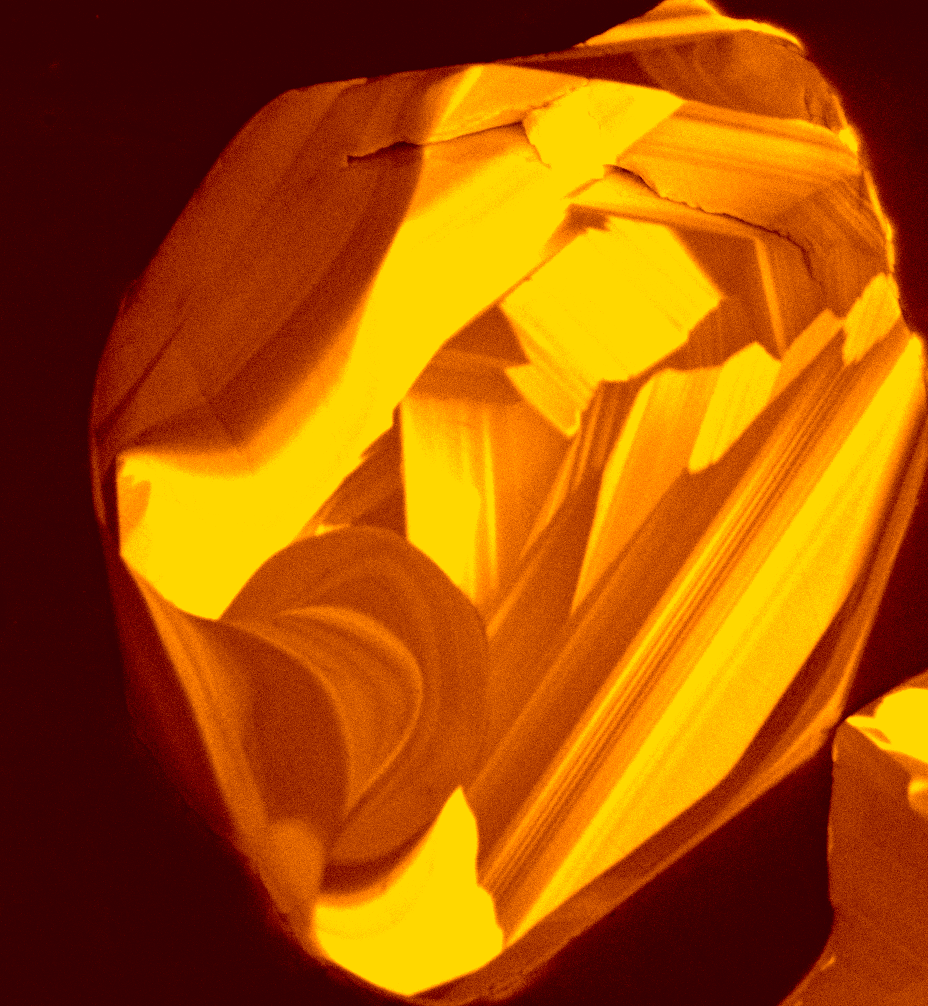
False color image of a 50 micron wide zircon crystal typical of one of the many analyzed for this study
Chris Kirkland
Of course, it is more difficult to prove that something didn't happen than that something did happen: absence of evidence is not evidence of absence. However, the degree to which the evidence that should be present is lacking is striking. Even Anders Scherstén of Lund University, lead author on a 2013 research paper that argued in favor of the meteorite impact model says, "The study is thorough and the absence of shock features combined with mantle like oxygen isotope signatures in zircon provides conspicuous absence of evidence for an impact in the zircon record."
"All the normal criteria used for evaluating impact structures, especially the microstructures in zircon, all those were absent," says Yakymchuk. "You have to take everything together and say, okay, what is the simplest explanation for all the features we see? And the simplest explanation is that this is not an impact."
Sometimes a great story is too good to be true. But it's also important to remember that even though, with so much new data, the evidence no longer supports a giant meteorite impact, it is only the original interpretation, not science itself, that is wrong. It's a natural part of the scientific process to discard some hypotheses, as long as we follow the rigorous standards of scientific logic and testing.
Editor’s note: The author of this article, Julie Hollis, was part of an international team that produced this research, including Chris Yakymchuk (University of Waterloo), Chris Kirkland and Aaron Cavosie (Curtin University), Kristoffer Szilas and Pedro Waterton (University of Copenhagen), Nicholas Gardiner (University of St Andrews), Agnete Steenfelt (Geological Survey of Denmark and Greenland), and Laure Martin (University of Western Australia).
